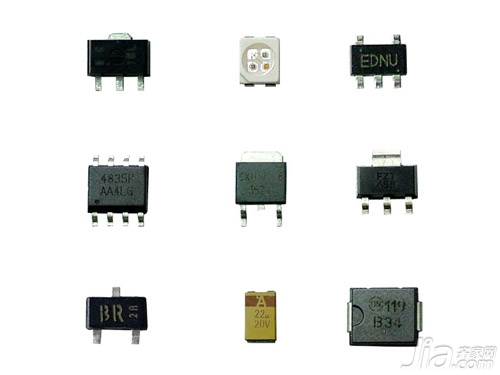
Privacy statement: Your privacy is very important to Us. Our company promises not to disclose your personal information to any external company with out your explicit permission.
There are two types of transistors: PNP type and NPN type. When determining a transistor, it is sufficient to know whether the base is a P type material or an N type type material. With the continuous advancement of science and technology, people's demand for triodes continues to increase, I believe we will not be unfamiliar with the patch transistor , patch transistors in our daily lives. Nowadays there are numerous specifications for SMD transistors available on the market, which can be appropriately selected according to actual needs. What are the specifications of the SMD transistor model? Let's learn about it together below.

SMD transistor - Function
Nowadays, there are different styles, types, performances, and materials in the market. The triode refers to a current-controlled semiconductor device that acts as an amplification and weak contact point for weak signals. The patch transistor has a series of unique advantages such as a firm structure, a small size, a long service life, and a low power consumption during use. The SMD transistor has an important parameter that is the current amplification factor. The SMD transistor can also be used as an electronic switch to form an oscillator with other electronic components. In the replacement of SMD transistor, it is necessary to understand the original pipe performance, structure or special requirements.
SMD Transistor - Specification
I believe that everyone will not be unfamiliar with the SMD transistor, due to the increasing market demand for SMD transistors, making the SMD transistor model specifications are also increasing, the more common SMD transistor models are: 9011 1T, 9012 2T, 9013 J3, 9014 J6, 9015 M6, 9016 Y6, 9018 J8, S8050 J3Y, S8550 2TY, 8050 Y1, 8550 Y2, 2SA1015 BA, 2SC1815 HF, 2SC945 CR, MMBT3904 1AM, MMBT3906 2A, MMBT2222 1P, MMBT5401 2L, MMBT5551 G1, MMBTA42 1D, MMBTA92 2D, BC856 3D and many other different models.

SMD Transistors - Classification
SMD transistors are divided according to polarity: NPN transistor and PNP transistor, SMD transistor is divided into: silicon triode and triode, according to the operating frequency of the SMD transistor is divided into: low-frequency triode and high-frequency transistor, according to the patch Transistor power is divided into: low-power transistor, power transistor, high-power transistor, according to the application of patch transistor is divided into: amplification tube and switch tube. Due to the different types of SMD transistors, performance and functionality are also different. In the practical application of SMD transistors, appropriate choices can be made according to needs to meet different requirements.
SMD Transistor - Switch Circuit
SMD transistors can also be used as switches in addition to AC signal amplifiers. Strictly speaking, SMD transistors and mechanical contact switches are not the same in operation, but they do not have the characteristics of mechanical switches. When the SMD transistor is in a saturated conduction state, both the emitter junction and the collector junction are forward biased. In the amplified state, the SMT transistor is characterized in that the emitter junction is forward biased and the collector junction is reverse biased. The SMD transistor has the same appearance as an ordinary transistor. When it is in the cut-off region and saturation region, it is equivalent to the circuit cut-off and conduction. Since the SMD transistor has a complete disconnection and turn-on effect, it is widely used in various switching circuits.

SMD transistor - use
SMD transistors are commonly used in switching power circuits, high-frequency oscillation circuits, drive circuits, analog-to-digital conversion circuits, pulse circuits, and output circuits. When the voltage applied to the junction junction of the SMD transistor is greater than the turn-on voltage of the PN junction, and the base current of the SMT transistor increases to a certain extent, the collector current no longer increases with the increase of the base current, but No change near a certain value. The SMD transistor and the plug-in transistor have the same function, but the package of the transistor is different. SMD transistors are smaller in size, save space, and eliminate manual insertion.
Editor's summary: The above is the classification of patch triodes, the related introduction of the use of patch triodes, hope to help friends who have this need! For more information, please continue to follow our website. Follow-up will present more exciting content!
Decoration use
November 21, 2022
September 29, 2022
August 10, 2024
April 30, 2024
September 29, 2024
November 18, 2023
Bu tedarikçi için e-posta
November 21, 2022
September 29, 2022
August 10, 2024
April 30, 2024
September 29, 2024
November 18, 2023

Privacy statement: Your privacy is very important to Us. Our company promises not to disclose your personal information to any external company with out your explicit permission.

Fill in more information so that we can get in touch with you faster
Privacy statement: Your privacy is very important to Us. Our company promises not to disclose your personal information to any external company with out your explicit permission.